Art News and Updates from Gallereo
All the latest news from the art world, as well as what's happening here at Gallereo. If you've built a gallery at Gallereo, let us know about your experience and you and your site could feature in our blog in the coming weeks.
Friday 24th April 2015Spot the Fake Masterpiece
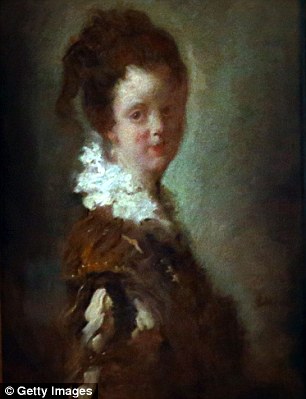
Social experiments are hardly anything new to the art world. Performance art, that often most conceptual of all art movements, is intrinsically based on social perceptions and the way we interact with the world around us. In the latest twist, though not exactly a performance art piece, an art gallery has been challenging its visitors to take a turn playing art authenticator and attempt to determine which is a true masterpiece and which is a fake. Dulwich Picture Gallery, which has Jean-Honoré Fragonard’s 18th-century work Young Woman hanging on its walls, ordered a hand-painted copy of the piece from China for about £70, and asks visitors to take a guess at which is the original and which is relatively worthless.
Amusingly enough, it appears to be incredibly difficult for the average person to tell the difference. After three months worth of guesses by over 3000 visitors who attended the gallery during the experiment, a paltry 10% of guesses were correct. Whether this is more of a reflection on the caliber of visitors that the gallery gets, the skill of the Chinese artist who painted the fake, or simply the true difficulty of the task is unclear, but it provides an interesting commentary on the ability of the average person to appreciate true art.
Xavier Bray, the chief curator for the gallery, told MailOnline, "It made people look closely at a painting and discern what might be a replica and why. Ten per cent got it right, which means Britain as a nation is still a nation of connoisseurs, which is great. Unfortunately others got it wrong. A number of visitors presumed the imposter was a female portrait by Rubens, which had been restored 10 years ago, because it appeared brighter. But that was interesting as it allowed us to find out more about the way the public look at our paintings."
The entire exhibit was the brainchild of American artist Doug Fishbone, and is entitled Made in China. Bray raised some interesting points about the possible future of the fake painting, as well, and probably quite valid ones (although nothing so grand as if a more prominent gallery had pulled off the same experiment. "It will be very interesting to see what happens when the counterfeit leaves the gallery. Will it achieve significance and become a work of art? This is where the power of it being displayed in a temple of a museum could give it extra significance in the art world - that is also part of the experiment."
Posted on April 24th 2015 on 10:48pm
0 Comments
Wednesday 22nd April 2015Street Geodes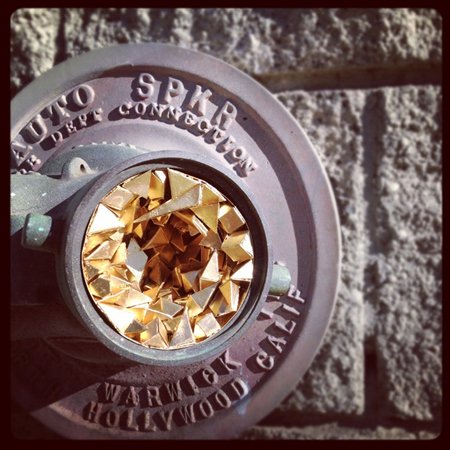
Typically, when you hear the phrase 'street art', spraypainted images come to mind if you're feeling charitable, and graffiti and vandalism comes to mind if you're not. While that's certainly one of the most common and popular uses of the phrase, it's not the only possible application. Installations are often inserted into the built environment in ways that are intended to astound and amuse, as ways to bring a little bit more joy and consideration into the world around us. This is exactly the goal of an innovative street art project by artist Paige Smith, who also uses the name 'a common name' in her work, who has spent the last several years filling the potholes and gaps in cities around the world with her installations.
Shaped after the crystalline formations found in some rocks known as geodes, these tiny sculptures integrate with the cracks in walls and foundations, the potholes in streets and alleys, and just about anywhere else there is room for one of them. Created from a variety of media including paper, spray paint and polished resin, the pieces have most recently popped up around Los Angeles, but can be found by the dedicated observer in many cities around the world, from Madrid to Philadelphia to Bali to Istanbul. For the full list of cities and locations, check out the page on
her website that is dedicated to the project here.
About the project, she says, "I draw inspiration from quiet, modest, tucked away spaces: the cracks in between bricks, the grating of a drain, the inside of a pipe and interior of a derelict phone booth. ‘Urban Geodes’ are created either out of hand cut and folded paper or individually cast resin and configured seamlessly to fit into spaces that inspire me. These installations are like hidden gems sprinkled across the world that invite us to actually look, to be playful and discover and to participate in a glorious and global treasure hunt."
Interestingly enough, she's staged the project as a collaborative effort, opening up the project to other artists in cities that she hasn't had the chance (or, presumably, the inclination) to go and visit herself. If you're interested in participating in the project, you can contact her via her website in order to get more information about how to join in her "beta", and share photos and GPS coordinates of your contribution.
Posted on April 22nd 2015 on 09:21pm
0 Comments
Friday 17th April 2015Affordable Art Fair in Asia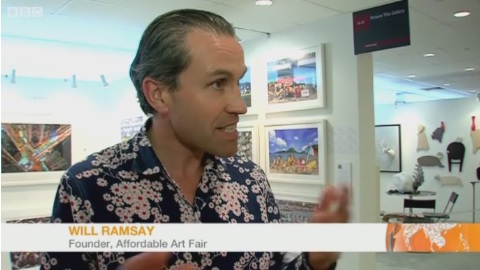
As you've no doubt heard us discussing before, art sales are going through the roof globally, and whether you think the market is in a bubble at the moment or not, global art sales topped $54 billion USD last year and show no signs of slowing down, let alone signs a bursting bubble. That being said, however, most of these sales are of the incredibly high-ticket variety, leaving smaller artists in the lurch.
Naturally, art fairs (another fever that has gripped the art world lately) are a great way for aspiring and undiscovered artists to make contact with a public hungry for original artwork yet unable to foot huge purchase prices. That original goal, however, has been slightly superseded by the buzz that now goes along with art fairs. Take a look at Art Basel in Miami Beach recently, where the stories quickly became about the celebrities who attended rather than about the art itself, and when celebrities arrive, prices skyright.
Will Ramsay, the founder of the Affordable Art Fair, hopes to balance the popularity of the art fair model with the original accessible nature of an art fair. Originally starting out in London in 1999, the Affordable Art Fair has since expanded to 17 cities, and is finding a foothold in the burgeoning Asian art market. Asian expansion started in Singapore with just shy of 10000 visitors, and has since expanded to two fairs a year with over 31000 visitors. The pieces are generally priced starting from $100 USD but not topping $10,000, ensuring that most people will be able to find an original piece that suits their taste.
Speaking to the BBC, Ramsay explained the motivations behind the start of his business, saying, "I used to go to galleries in my early mid-20s, and I felt I was not being helped to learn about art, to understand and to realize that I could afford it, so I thought let's try and democratize it, open it up to a new customer base, and so we want people to come here to realize that you don't have to be a squillionaire to buy art, you don't have to know anything about art to buy it. We're very visually tuned in through magazines, and good cinematography in films, and all that sort of thing, so our taste is more developed than you might think, even if you haven't bought anything before."
While it's less likely that the average buyer is going to see the kind of appreciation on their investment that someone buying a Picasso or a Rembrandt would receive, there is still a tantalising possibility that the original art piece you buy will one day become incredibly valuable.
Posted on April 17th 2015 on 06:25pm
0 Comments
Wednesday 15th April 2015Snowden Hologram Replaces Sculpture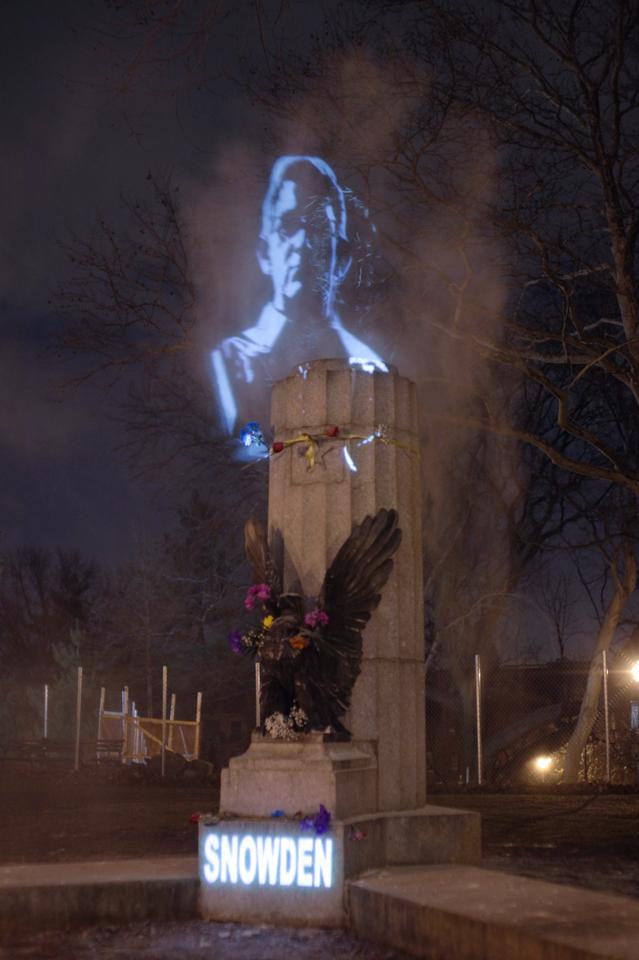
Remember our recent post on the uncommissioned sculpture of NSA whistleblower Edward Snowden that was erected in a Brooklyn, NY park one night at the beginning of April, and taken down the very next day? (In case you didn't
here's a link to the original post discussing the sculpture itself). Well, not to be outdone by perceived censorship, a completely different group of artists banded together to create a hologram of the original Snowden bust in the very same park.
The artist group, apparently known as 'The Illuminator Art Collective' (doubtless a reference to the holographic nature of their work), had this to say:
"Inspired by the actions of these anonymous artists, The Illuminator Art Collective recreated the intervention ephemerally by projecting an image of the sculpture into a cloud of smoke. Our feeling is that while the State may remove any material artifacts that speak in defiance against incumbent authoritarianism, the acts of resistance remain in the public consciousness. And it is in sharing that act of defiance that hope resides."
The original trio of artists who created the initial sculpture seemed a bit surprised but pleased when they learned of the holographic tribute, although they probably wished they'd taken the time to come up with a snazzy name for their collaboration. Their response, press-release style, states:
"We were surprised to see the way the statue was covered up before its removal, as though it were a profane statement. We were equally heartened to see the outpouring of support New York, and people online, have shared. Seeing flowers on the now empty monument was incredibly inspiring, but when another group of artists "reinstalled" the bust and nameplate in light, we were truly touched. It proves the meaning of the piece, and the tough questions it forces us to answer, will endure even though it's no longer physically present. We're thrilled this has inspired others to take creative action towards raising awareness about what it means to be an American, and a hero."
Apparently, the Illuminator Art Collective regularly works with activist groups in the attempt to bring public awareness to their particular campaigns, although it must be said that this writer has never run across their work before. There is a certain beauty to the idea of replacing supposedly censored artworks with holographic memories of the originals, but the inherently fragile nature of a hologram almost seems more of a funereal dirge than a celebration.
(Photo credit: Kyle Depew)
Posted on April 15th 2015 on 05:54pm
0 Comments
Friday 10th April 2015Artist Spotlight: Alison Jackson
It's hardly any secret that modern society is completely obsessed with celebrity. It's impossible to browse the net or even stand in line at the grocery store without being constantly bombarded with the latest gossip about who did what to whom, now with 5 extra hours of analysis and speculation. It's frenetic and never-ceasing, and completely and utterly unavoidable. Enter Alison Jackson, a prominent photographer whose entire body of work is based on (you guessed it!) celebrities. Perhaps more accurately, however, her work is about our obsession with them.
Jackson's work, which has been prominently featured in England and around the world since the late 90s, creates fake paparazzi photos using celebrity lookalikes. So carefully and meticulously created, they regularly fool the celebrity-obsessed hordes, and that has only become even more prevalent thanks to the rapid-fire sharing that happens online, usually with little-to-no fact checking or even basic attempts at locating the image source.
Speaking to Complex magazine, Jackson said, "I’m fascinated by how people get so emotional and so involved in celebrities when they haven’t ever met them. There’s no close relationship, it’s purely a mediated one, and it runs as an industry. The publicists run it, they make money out of it, the celebrities get a fantastic lifestyle from being famous, the magazines and the TV shows make a lot of money from it, and everyone aspires to it."
Jackson's work originally caught the public imagination with faked photos of Princess Diana and Dodi Al-Fayed, and their supposed baby, but has since gained serious steam, as she won a prestigious BAFTA award for her work on the BBC2 comedy series Doubletake, based on similar principles to her own still image work.
Still speaking to Leigh Silver of Complex, she said, "We're used to seeing celebrities as two-dimensional images on the Internet, in magazines, or on television, so when the public sees the photograph, it doesn’t really matter whether it’s the real person or not. The celebrity can be replaced, and I suppose that’s what I am doing with my photography and film."
An excellent point, and one that will constantly need to be made until we finally have a meaningful dialog about media literacy, self-awareness and the value of our own lives when compared to the idealized perception of a stranger's life we've never even encountered. Take a look at more of the works of Alison Jackson at her website,
alisonjackson.com.
Posted on April 10th 2015 on 05:42pm
0 Comments
Wednesday 08th April 2015Uncommissioned Snowden Sculpture in New York
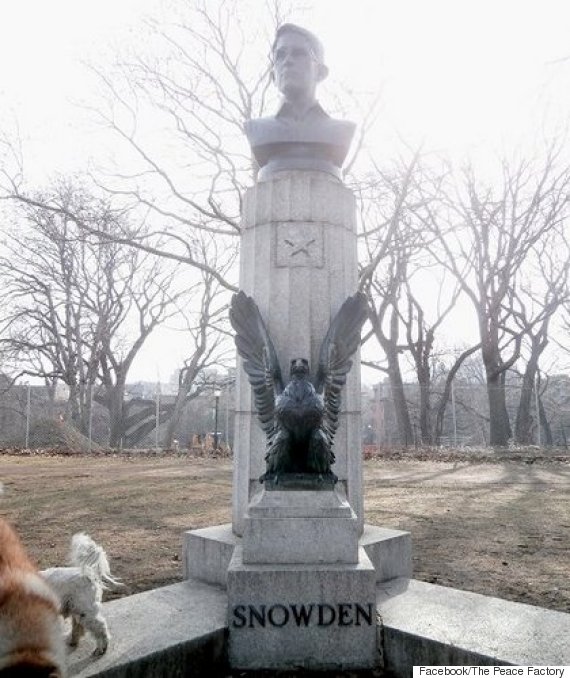
Guerrilla art installations have a long and checkered history, and one might argue that it's one of the few remaining artistic styles that can provide genuine surprise and shock to the viewer, thanks to the inherent unexpectedness of running into a piece of art where you least expect it. A perfect example is the social media firestorm that was triggered by a piece of guerilla sculpture that was installed in a New York City park on April 6th, 2015. Unfortunately, the piece was rapidly removed (extremely surprisingly rapidly, considering that city officials were responsible), but not before some excellent photos were captured and submitted to the social media news website Mashable.
The piece is extremely controversial, which is probably a large part of the reason that officials were so eager to remove it: it was a bust of Edward Snowden. Installed in Fort Greene Park in Brooklyn, it was actually mounted atop a prior memorial dedicated to prisoners of war who died on British prison ships during the American Revolution, which is no doubt at least partly responsible for the rapidity with which the New York Parks department covered and then removed the piece. Perhaps amusingly, Mashable reports that the artists had entertained hopes that that statue would attain permanent residency in the park, which is remarkably naive, if true.
Whether you believe he was a heroic whistleblower that exposed massive government surveillance programs or that he was a traitor who betrayed American security, it's hard to deny that Snowden is a pivotal figure in current geopolitics. Whether that means it's appropriate to idolize him at the expense of other memorials is maybe outside the scope of this short post, but the artists did make some interesting comments about what they hoped ooto accomplish with the piece.
Speaking to Mashable, the artists responsible for the piece explained, "This is a guy who some of the traditional mass media has portrayed as a traitor, or a terrorist, and the very same thing would have been said about these POWs in the Revolutionary War times. But with 200 years of perspective, we realized they were fighting for something all of us are very grateful for. We hope it will shift people’s perceptions, or open their eyes, that there could be a different story than what they’e been told."
It's long been the case that repressive regimes tend to strike first at the creative community with censorship and other weapons, but it seems like something of a stretch to claim that this is what's currently happening in America. Regardless, this art installation forced Snowden back into the public consciousness, demonstrating again that media savvy is one of the most important tools when it comes to freedom of speech.
Posted on April 08th 2015 on 04:41pm
0 Comments
Friday 03rd April 2015Creative Resources for Digital Artists

When starting out as a digital artist, it can be difficult to navigate the complex world of art resources available on the internet, which are vast in scope, to say the least. It's all too easy to wind up creating a masterpiece only to find out that some part of a source you've used in the construction expressly prohibits its usage in a commercial work, which mean no sales for you. That doesn't mean you have to create every single element in every project you use from scratch, just that it's important to know what resources are available to use and which have prohibitive usage restrictions.
As you progress, of course, you'll come to appreciate the value of creating every element yourself, but for beginners learning the skills themselves, this is hardly practical. Whether you're a graphic designer looking for a stock photo, a Photoshop artist looking for a source file, or even a 3D artist who needs the perfect texture for mapping, it's nice to avoid re-inventing the wheel sometimes.
Fortunately, there are a number of places to look where you find imagery that is free to use. Unfortunately, it's not just as simple as visiting Google Images and doing a quick search - this is exactly the kind of thing that can create problems for you later on down the road. There are a number of free stock photo sites that offer an array of completely free to use images, although some are offered under specific licenses such as the Creative Commons, or simply require attribution if used in a derivative work. Morguefile is a great site with a large bank of images, although sometimes it seems like part of the reason people give the images away for free is that the subject matter isn't well-executed enough to be sold on more high profile sites. FreeImages (formerly StockXchange) is also a good site, although they often try to upsell paid stock images in their search results, so make sure that you don't set your heart on one of those (although, if it comes down to it, individual images are usually relatively cheap).
It's important to note, though, that a good digital camera can often be a far more helpful and creatively-satisfying option, as producing every element of your final work creates a much more honest piece, but sometimes this just isn't an option - if not, these resources should have you covered.
Posted on April 03rd 2015 on 08:21pm
0 Comments
Wednesday 01st April 2015Genre Spotlight: Abstract Expressionism
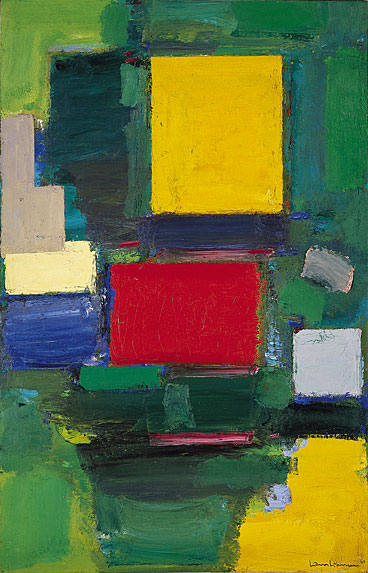
Abstract expressionism is an exciting style, quite literally: as you might guess from the'expressionism' aspect of the name, being most frequently characterized by a unique degree of physical interaction between artist and canvas. The shapes are bold and kinetic, and the colour palettes and scale of the pieces tend to bear out this initial sensation. Jackson Pollock, who we recently reviewed in our Artist Spotlight segment, is probably the most famous artist in the movement, but it had called a number of famous artists its own during its day, including Arshille Gorky, Hans Hofmann (whose painting 'The Gate' is shown to the right) and John Graham.
Abstract expressionism is one of the most visually intriguing movements to develop in the art world during the 19th century, but it has even more to its credit than beauty for the role it played in the dynamics of the art world. Before the advent of the movement in the 1940s, Paris had been widely regarded as the central hub of the Western art world. North America was regarded as something of a cultural backwater, an upstart colonial society that was still hadn't earned its creative chops. With the advent of abstract expressionism in the United States, suddenly the hottest place on the planet to be an artist was New York City, and Paris was forced by general acclaim to cede the crown (although there are no doubt still some die-hards who would place Paris above NYC, notably most Parisians).
Primarily, abstract expressionism in the painting world is broken up into two major styles, although naturally they can't cover all possible interactions of the movement, which also lent themselves well towards sculpture, thanks to the kinesthetic natural of the act of sculpting. In painting, however, the two major styles are generally recognized as action painting, which Jackson Pollock was famous for, and colour field painting, which is exemplified in the work of Hans Hoffman.
Action painting more or less does what it says on the tin, and is remarkably enjoyable to do, although difficult to do well. As Pollock said, "My painting does not come from the easel. I prefer to tack the unstretched canvas to the hard wall or the floor. I need the resistance of a hard surface. On the floor I am more at ease. I feel nearer, more part of the painting, since this way I can walk around it, work from the four sides and literally be in the painting." By contrast, colour field painting tends to be more deliberate, and relies on the emotional reactions produced by large, bold shapes.
Posted on April 01st 2015 on 07:56pm
0 Comments
Friday 27th March 2015Free Art Books from the Met
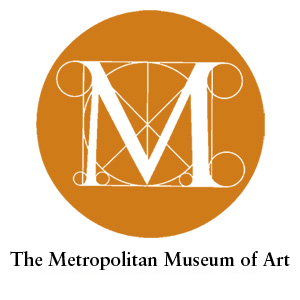
One of the most enjoyable things about the internet is the way that it has completely changed our access to information. Almost any question can be answered relatively easily, and even the more complex questions can likely be answered with a little bit of digging around online (and, of course, the application of some critical thinking skills to ensure you don't wind up in the web of misinformation that also exists parallel to fact). But there's still something nice about having books, for the simple fact that it's more of a curated experience, almost akin to walking through a museum. Instead of self-direction, an expert guides you through a topic, showing examples they've chosen instead of ones you might happen upon yourself. This becomes a bit of a problem in the world of art books, however, since so many of them are large-format hardcover books that can easily let you rack up a huge bill at your local bookstore (or, more likely at Amazon, but regardless - they're expensive).
Enter the Metropolitan Museum of Art, which has decided to release a huge number of its published works online completely free - and that's free as in beer, no hidden fees or anything like that. Under the umbrella of their MetPublications brand, there are now over 400 free ebooks available for download from their website, which you can
browse through here. They politely ask for a donation, but it's completely optional. When you stack that up against paying well over $100 for a single one of their admittedly gorgeous volumes, it's easy to see the appeal.
If that doesn't pique your interest, however, the Met has also decided to digitize and make public over 400,000 high resolution images from their collection - and best of all, they're free to access and free to use, providing you don't try to take credit for them, of course. Give it a look over and see if you find your next inspiration!
Posted on March 27th 2015 on 04:57pm
0 Comments
Wednesday 25th March 2015Photography Through the Ages
.jpg)
It's almost impossible to live a day of life in the 21st century without seeing hundreds of photographs every day. Whether they're covering your favorite website or just the billboards on the way to work, photographs have become a major part of our lives - but they've only become so over the last 50 years. It's hard to imagine a world where the best pictures we could have of our loved ones were expensively painted portraits or even simple sketches, but it's not so far behind us.
The first camera, known as a camera obscura, was in use by many ancient cultures, but these early cameras were only able to project a negative image onto a surface, because photographic film had not yet been invented. For many centuries, they were simple curiosities, but like all good ideas, the camera was bound to have its day.
Cameras have quite a long history beyond being curiosities, though. In fact, some people insist that the famous European painter Vermeer and many other artists in the 17th and 18th centuries made use of a camera obscura to help paint their masterpieces, which were admired for their perfect perspective and incredible attention to detail. This has never been proven, but it is a popular and controversial argument that has many scholarly supporters.
By the time the 19th century rolled around, many people were experimenting with early cameras, but once George Eastman invented celluloid photographic film in the late 1800s, the camera truly took hold in people's imagination. His first camera, 'Kodak', (which the company was eventually named for), was a success, but his next model, the Brownie, was so successful that it was on sale from 1900 all the way to the 1960s, although it had been improved a lot along the way.
The thing that was truly unique about the Brownie was that it was the first camera to really make snapshots possible for the average person. Suddenly everyone had a way to remember their family, friends, and experiences in a way that had never been possible before. No doubt, Eastman would have loved the modern world of digital photography we live in now, where anyone with a camera and an internet connection can send a picture around the globe in less time than it takes to read this post!
Posted on March 25th 2015 on 04:44pm
0 Comments
 Social experiments are hardly anything new to the art world. Performance art, that often most conceptual of all art movements, is intrinsically based on social perceptions and the way we interact with the world around us. In the latest twist, though not exactly a performance art piece, an art gallery has been challenging its visitors to take a turn playing art authenticator and attempt to determine which is a true masterpiece and which is a fake. Dulwich Picture Gallery, which has Jean-Honoré Fragonard’s 18th-century work Young Woman hanging on its walls, ordered a hand-painted copy of the piece from China for about £70, and asks visitors to take a guess at which is the original and which is relatively worthless.
Social experiments are hardly anything new to the art world. Performance art, that often most conceptual of all art movements, is intrinsically based on social perceptions and the way we interact with the world around us. In the latest twist, though not exactly a performance art piece, an art gallery has been challenging its visitors to take a turn playing art authenticator and attempt to determine which is a true masterpiece and which is a fake. Dulwich Picture Gallery, which has Jean-Honoré Fragonard’s 18th-century work Young Woman hanging on its walls, ordered a hand-painted copy of the piece from China for about £70, and asks visitors to take a guess at which is the original and which is relatively worthless. Typically, when you hear the phrase 'street art', spraypainted images come to mind if you're feeling charitable, and graffiti and vandalism comes to mind if you're not. While that's certainly one of the most common and popular uses of the phrase, it's not the only possible application. Installations are often inserted into the built environment in ways that are intended to astound and amuse, as ways to bring a little bit more joy and consideration into the world around us. This is exactly the goal of an innovative street art project by artist Paige Smith, who also uses the name 'a common name' in her work, who has spent the last several years filling the potholes and gaps in cities around the world with her installations.
Typically, when you hear the phrase 'street art', spraypainted images come to mind if you're feeling charitable, and graffiti and vandalism comes to mind if you're not. While that's certainly one of the most common and popular uses of the phrase, it's not the only possible application. Installations are often inserted into the built environment in ways that are intended to astound and amuse, as ways to bring a little bit more joy and consideration into the world around us. This is exactly the goal of an innovative street art project by artist Paige Smith, who also uses the name 'a common name' in her work, who has spent the last several years filling the potholes and gaps in cities around the world with her installations. As you've no doubt heard us discussing before, art sales are going through the roof globally, and whether you think the market is in a bubble at the moment or not, global art sales topped $54 billion USD last year and show no signs of slowing down, let alone signs a bursting bubble. That being said, however, most of these sales are of the incredibly high-ticket variety, leaving smaller artists in the lurch.
As you've no doubt heard us discussing before, art sales are going through the roof globally, and whether you think the market is in a bubble at the moment or not, global art sales topped $54 billion USD last year and show no signs of slowing down, let alone signs a bursting bubble. That being said, however, most of these sales are of the incredibly high-ticket variety, leaving smaller artists in the lurch. Remember our recent post on the uncommissioned sculpture of NSA whistleblower Edward Snowden that was erected in a Brooklyn, NY park one night at the beginning of April, and taken down the very next day? (In case you didn't here's a link to the original post discussing the sculpture itself). Well, not to be outdone by perceived censorship, a completely different group of artists banded together to create a hologram of the original Snowden bust in the very same park.
Remember our recent post on the uncommissioned sculpture of NSA whistleblower Edward Snowden that was erected in a Brooklyn, NY park one night at the beginning of April, and taken down the very next day? (In case you didn't here's a link to the original post discussing the sculpture itself). Well, not to be outdone by perceived censorship, a completely different group of artists banded together to create a hologram of the original Snowden bust in the very same park. It's hardly any secret that modern society is completely obsessed with celebrity. It's impossible to browse the net or even stand in line at the grocery store without being constantly bombarded with the latest gossip about who did what to whom, now with 5 extra hours of analysis and speculation. It's frenetic and never-ceasing, and completely and utterly unavoidable. Enter Alison Jackson, a prominent photographer whose entire body of work is based on (you guessed it!) celebrities. Perhaps more accurately, however, her work is about our obsession with them.
It's hardly any secret that modern society is completely obsessed with celebrity. It's impossible to browse the net or even stand in line at the grocery store without being constantly bombarded with the latest gossip about who did what to whom, now with 5 extra hours of analysis and speculation. It's frenetic and never-ceasing, and completely and utterly unavoidable. Enter Alison Jackson, a prominent photographer whose entire body of work is based on (you guessed it!) celebrities. Perhaps more accurately, however, her work is about our obsession with them. Guerrilla art installations have a long and checkered history, and one might argue that it's one of the few remaining artistic styles that can provide genuine surprise and shock to the viewer, thanks to the inherent unexpectedness of running into a piece of art where you least expect it. A perfect example is the social media firestorm that was triggered by a piece of guerilla sculpture that was installed in a New York City park on April 6th, 2015. Unfortunately, the piece was rapidly removed (extremely surprisingly rapidly, considering that city officials were responsible), but not before some excellent photos were captured and submitted to the social media news website Mashable.
Guerrilla art installations have a long and checkered history, and one might argue that it's one of the few remaining artistic styles that can provide genuine surprise and shock to the viewer, thanks to the inherent unexpectedness of running into a piece of art where you least expect it. A perfect example is the social media firestorm that was triggered by a piece of guerilla sculpture that was installed in a New York City park on April 6th, 2015. Unfortunately, the piece was rapidly removed (extremely surprisingly rapidly, considering that city officials were responsible), but not before some excellent photos were captured and submitted to the social media news website Mashable. When starting out as a digital artist, it can be difficult to navigate the complex world of art resources available on the internet, which are vast in scope, to say the least. It's all too easy to wind up creating a masterpiece only to find out that some part of a source you've used in the construction expressly prohibits its usage in a commercial work, which mean no sales for you. That doesn't mean you have to create every single element in every project you use from scratch, just that it's important to know what resources are available to use and which have prohibitive usage restrictions.
When starting out as a digital artist, it can be difficult to navigate the complex world of art resources available on the internet, which are vast in scope, to say the least. It's all too easy to wind up creating a masterpiece only to find out that some part of a source you've used in the construction expressly prohibits its usage in a commercial work, which mean no sales for you. That doesn't mean you have to create every single element in every project you use from scratch, just that it's important to know what resources are available to use and which have prohibitive usage restrictions. Abstract expressionism is an exciting style, quite literally: as you might guess from the'expressionism' aspect of the name, being most frequently characterized by a unique degree of physical interaction between artist and canvas. The shapes are bold and kinetic, and the colour palettes and scale of the pieces tend to bear out this initial sensation. Jackson Pollock, who we recently reviewed in our Artist Spotlight segment, is probably the most famous artist in the movement, but it had called a number of famous artists its own during its day, including Arshille Gorky, Hans Hofmann (whose painting 'The Gate' is shown to the right) and John Graham.
Abstract expressionism is an exciting style, quite literally: as you might guess from the'expressionism' aspect of the name, being most frequently characterized by a unique degree of physical interaction between artist and canvas. The shapes are bold and kinetic, and the colour palettes and scale of the pieces tend to bear out this initial sensation. Jackson Pollock, who we recently reviewed in our Artist Spotlight segment, is probably the most famous artist in the movement, but it had called a number of famous artists its own during its day, including Arshille Gorky, Hans Hofmann (whose painting 'The Gate' is shown to the right) and John Graham. One of the most enjoyable things about the internet is the way that it has completely changed our access to information. Almost any question can be answered relatively easily, and even the more complex questions can likely be answered with a little bit of digging around online (and, of course, the application of some critical thinking skills to ensure you don't wind up in the web of misinformation that also exists parallel to fact). But there's still something nice about having books, for the simple fact that it's more of a curated experience, almost akin to walking through a museum. Instead of self-direction, an expert guides you through a topic, showing examples they've chosen instead of ones you might happen upon yourself. This becomes a bit of a problem in the world of art books, however, since so many of them are large-format hardcover books that can easily let you rack up a huge bill at your local bookstore (or, more likely at Amazon, but regardless - they're expensive).
One of the most enjoyable things about the internet is the way that it has completely changed our access to information. Almost any question can be answered relatively easily, and even the more complex questions can likely be answered with a little bit of digging around online (and, of course, the application of some critical thinking skills to ensure you don't wind up in the web of misinformation that also exists parallel to fact). But there's still something nice about having books, for the simple fact that it's more of a curated experience, almost akin to walking through a museum. Instead of self-direction, an expert guides you through a topic, showing examples they've chosen instead of ones you might happen upon yourself. This becomes a bit of a problem in the world of art books, however, since so many of them are large-format hardcover books that can easily let you rack up a huge bill at your local bookstore (or, more likely at Amazon, but regardless - they're expensive)..jpg) It's almost impossible to live a day of life in the 21st century without seeing hundreds of photographs every day. Whether they're covering your favorite website or just the billboards on the way to work, photographs have become a major part of our lives - but they've only become so over the last 50 years. It's hard to imagine a world where the best pictures we could have of our loved ones were expensively painted portraits or even simple sketches, but it's not so far behind us.
It's almost impossible to live a day of life in the 21st century without seeing hundreds of photographs every day. Whether they're covering your favorite website or just the billboards on the way to work, photographs have become a major part of our lives - but they've only become so over the last 50 years. It's hard to imagine a world where the best pictures we could have of our loved ones were expensively painted portraits or even simple sketches, but it's not so far behind us. 



